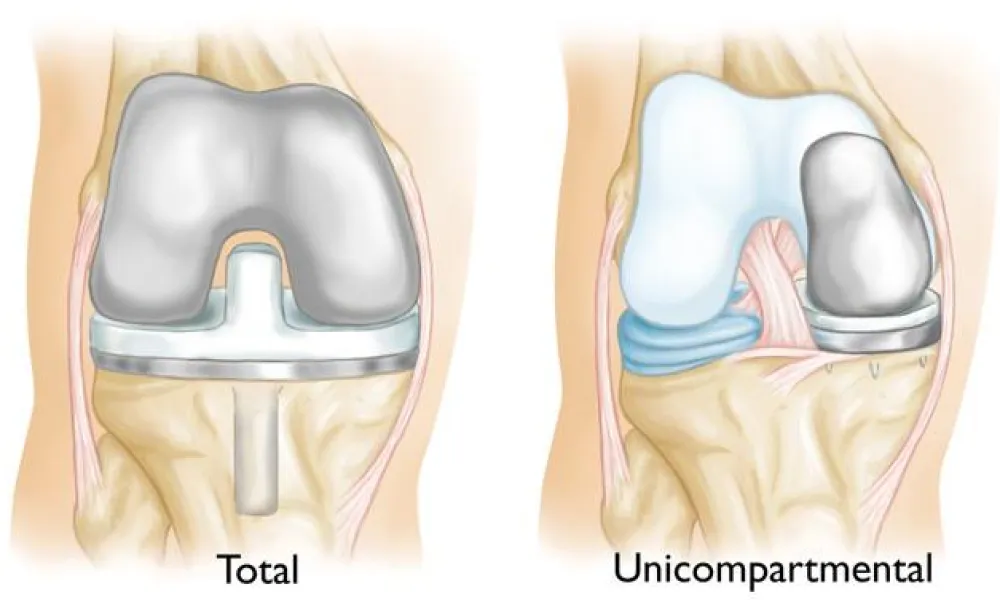In the July 1st, 2020 issue of the Journal of Bone and Joint Surgery, two experienced joint replacement specialists from Washington University in St. Louis, MO, shared their experience with partial or unicompartmental knee replacement (UKR).
In the article by Kazarian, 253 fixed- and mobile-bearing partial knees were reviewed with an average follow-up of 4.9 years. From this group, there were 36 revisions (repeat surgery to replace the implant with a total knee replacement) that occurred at an average of 3.7 years post-op. At approximately five years, 14.2% of the partial knees required revision. This compares with an expected failure rate for a total knee replacement of 2-3% at 5 years of follow-up.
There were several factors associated with the failures and these included: mal-alignment of the implants, an overhang of the implants, and instability of the knee. Each of the two surgeons performed 14.2 UKRs per year, just below the number considered high volume (which is 15 UKRs per year). The five-year survival rate was 88% and the 10-year survival rate was 70%, well below the expected survivorship (implant survives without need to be revised) of 95% for total knee replacement (TKR).
So what does this mean for potential UKR patients? First, less than 10% of patients meet the criteria for a partial knee replacement. There are several varieties of partial replacement, medial, lateral compartment, and patellofemoral replacement. Several studies, by designing surgeons, have demonstrated results similar to TKR. Surgeon experience, the surgical volume of partial knee replacement, and attention to implant placement and sizing are important. Performing at least 10 to 15 per year seems reasonable to gain experience and expertise to ensure good results.
At POA we have several surgeons who perform a high volume of partial medial and patellofemoral joint replacements. As noted somewhere between 7-10% of patients with knee arthritis are candidates for these procedures. High volume surgeons will have better outcomes and better insight into the appropriate indications for these procedures.

